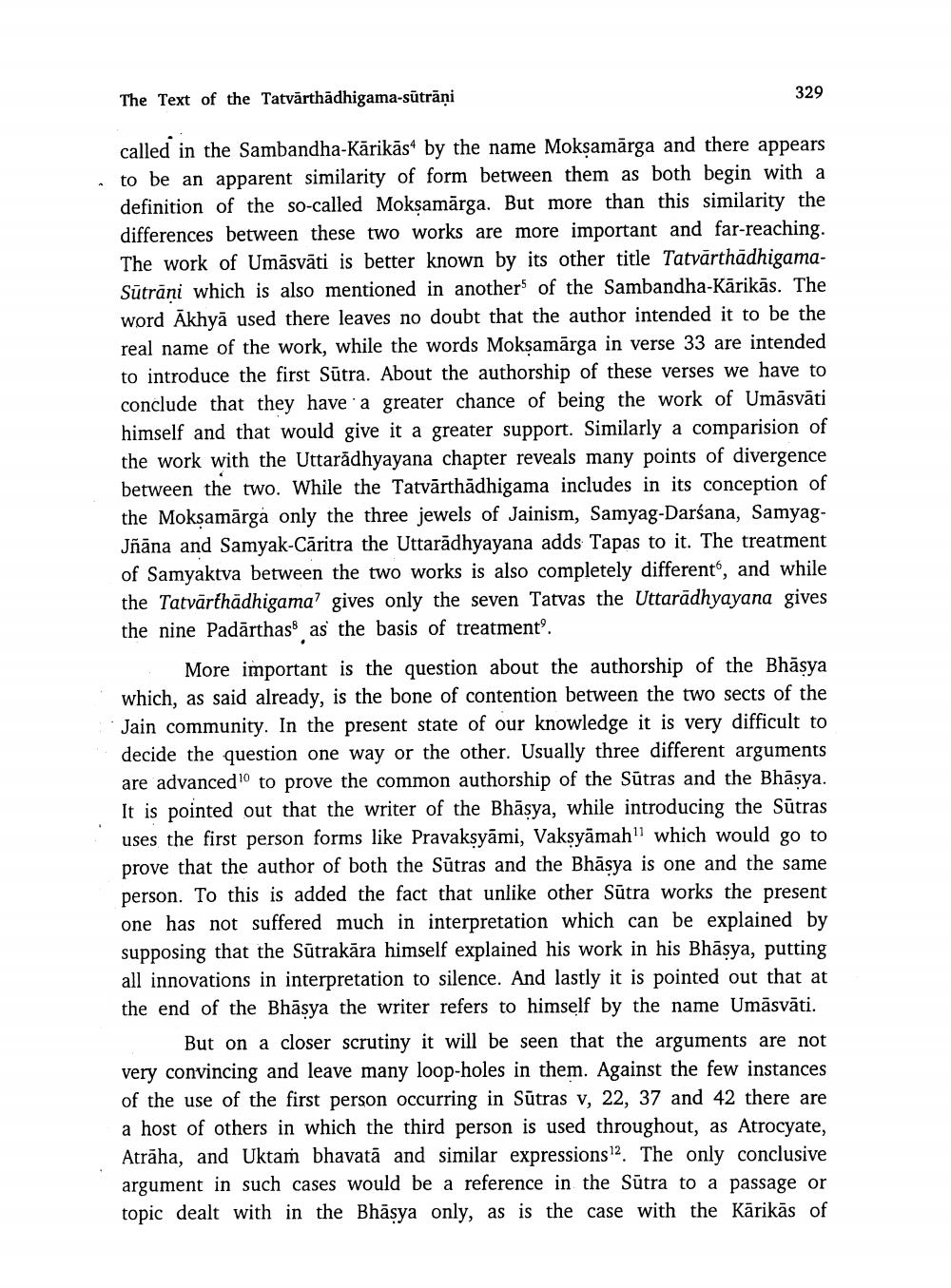________________
329
The Text of the Tatvärthädhigama-sütrāņi
called in the Sambandha-Kärikäs by the name Mokṣamärga and there appears to be an apparent similarity of form between them as both begin with a definition of the so-called Mokṣamärga. But more than this similarity the differences between these two works are more important and far-reaching.. The work of Umäsväti is better known by its other title TatvärthadhigamaSuträni which is also mentioned in another of the Sambandha-Kärikäs. The word Akhyā used there leaves no doubt that the author intended it to be the real name of the work, while the words Moksamärga in verse 33 are intended to introduce the first Sütra. About the authorship of these verses we have to conclude that they have a greater chance of being the work of Umäsväti himself and that would give it a greater support. Similarly a comparision of the work with the Uttarådhyayana chapter reveals many points of divergence between the two. While the Tatvarthādhigama includes in its conception of the Mokṣamärgȧ only the three jewels of Jainism, Samyag-Darśana, SamyagJñana and Samyak-Caritra the Uttaradhyayana adds Tapas to it. The treatment of Samyaktva between the two works is also completely different, and while the Tatvärfhädhigama' gives only the seven Tatvas the Uttarädhyayana gives the nine Padärthas as the basis of treatment".
More important is the question about the authorship of the Bhasyal which, as said already, is the bone of contention between the two sects of the Jain community. In the present state of our knowledge it is very difficult to decide the question one way or the other. Usually three different arguments are advanced to prove the common authorship of the Sutras and the Bhasya. It is pointed out that the writer of the Bhasya, while introducing the Sūtras uses the first person forms like Pravakṣyāmi, Vaksyämah" which would go to prove that the author of both the Sutras and the Bhasya is one and the same person. To this is added the fact that unlike other Sütra works the present one has not suffered much in interpretation which can be explained by supposing that the Sütrakāra himself explained his work in his Bhasya, putting all innovations in interpretation to silence. And lastly it is pointed out that at the end of the Bhāṣya the writer refers to himself by the name Umäsväti.
But on a closer scrutiny it will be seen that the arguments are not very convincing and leave many loop-holes in them. Against the few instances of the use of the first person occurring in Sutras v, 22, 37 and 42 there are a host of others in which the third person is used throughout, as Atrocyate, Atraha, and Uktam bhavatā and similar expressions 12. The only conclusive argument in such cases would be a reference in the Sutra to a passage or topic dealt with in the Bhasya only, as is the case with the Kärikäs of




